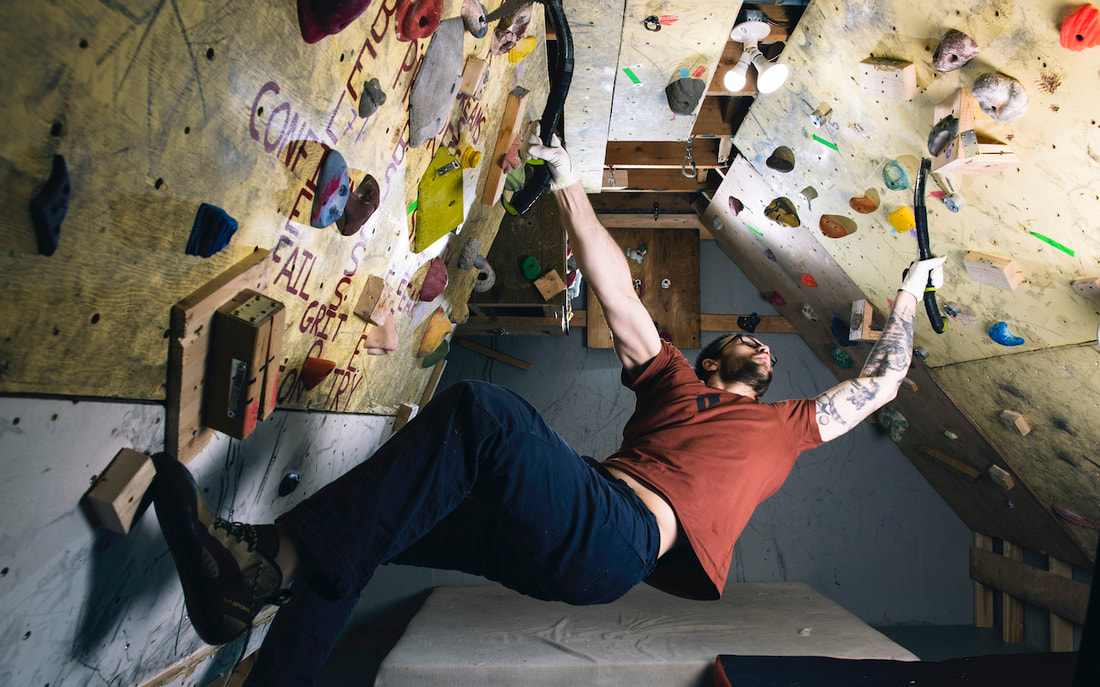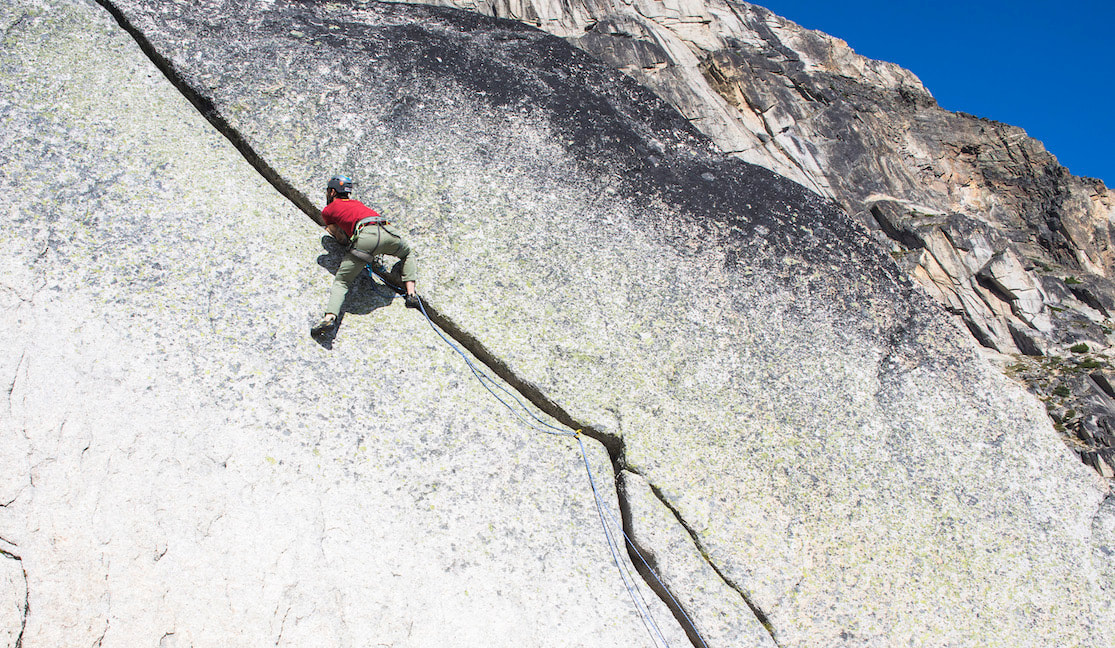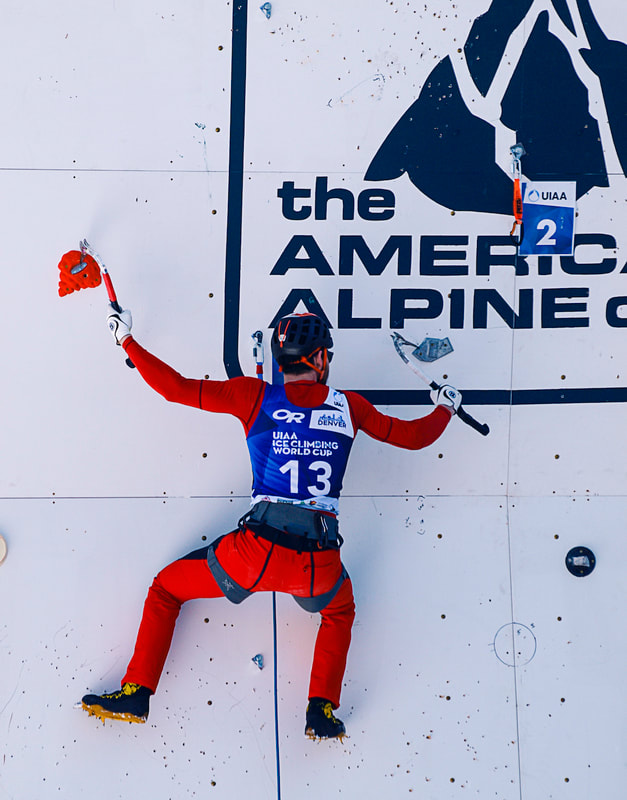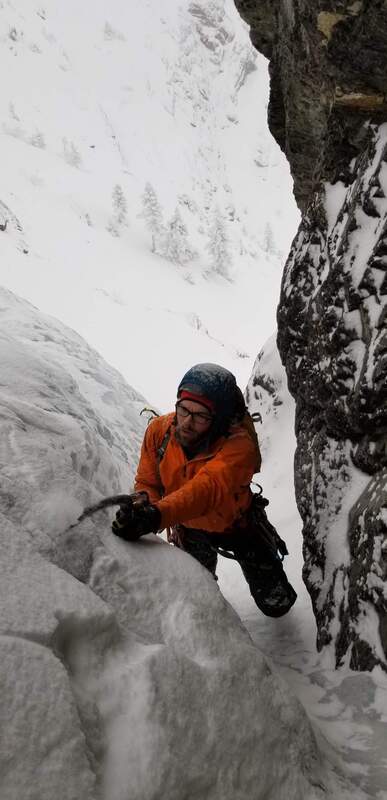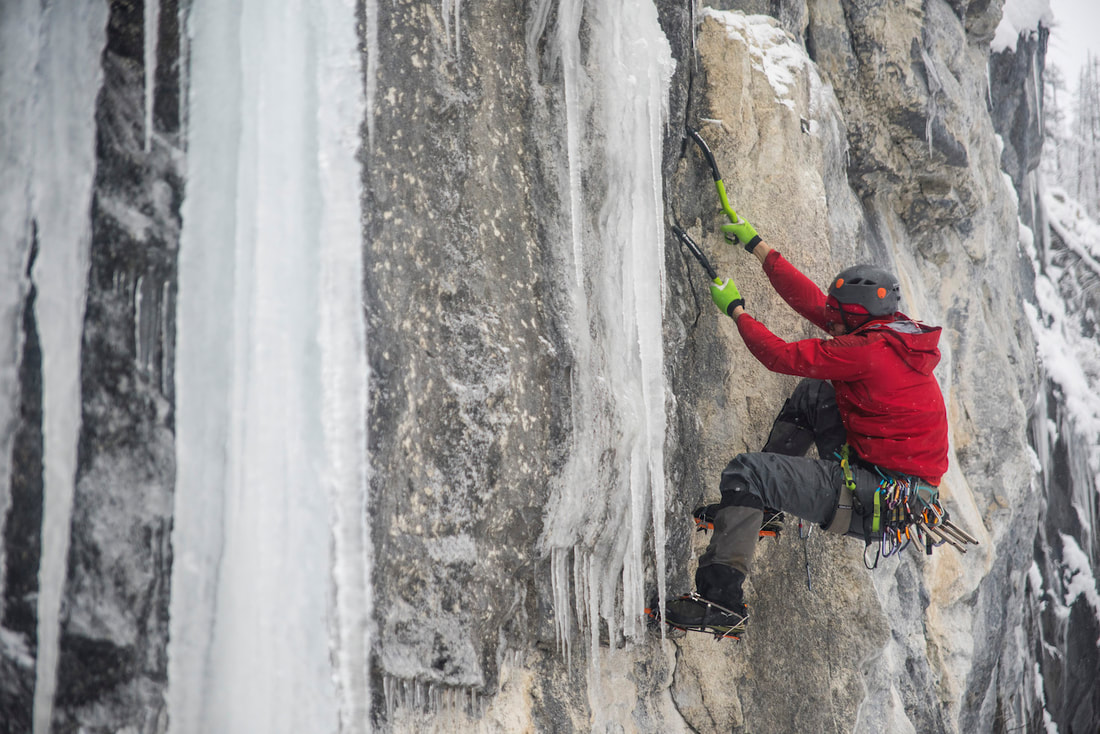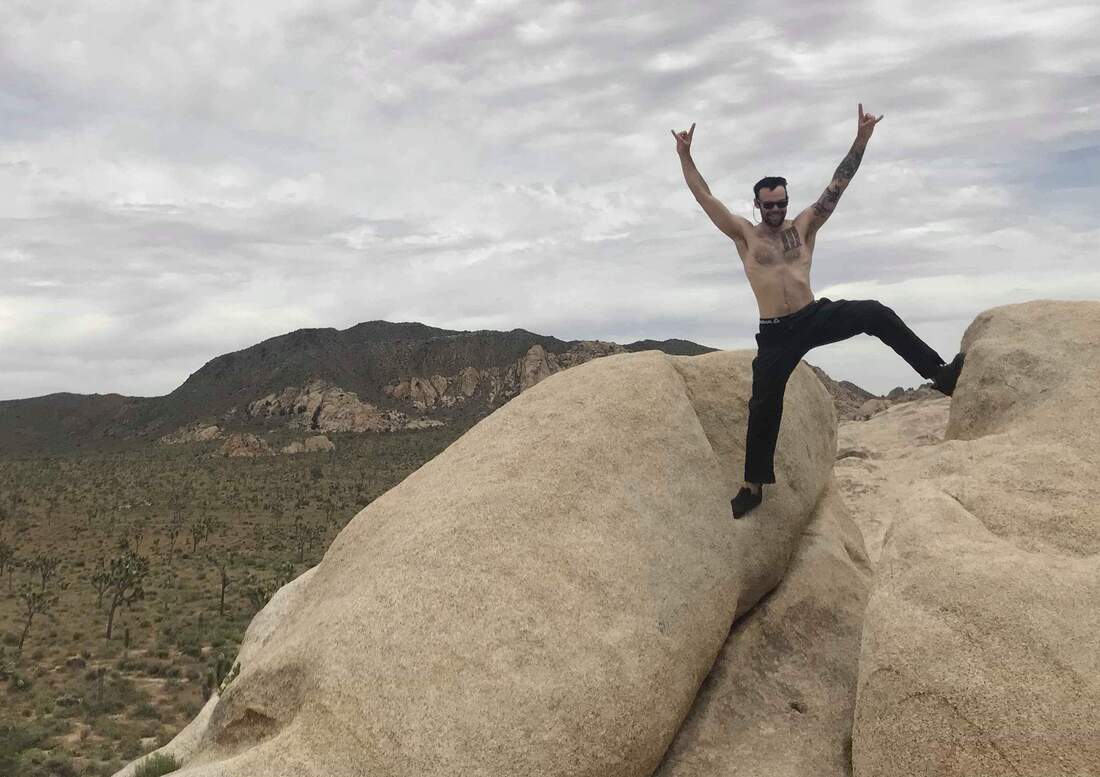21 years ago, at the age of 7, I was diagnosed with Klippel Trenaunay (KT) Syndrome - a rare disease that causes my veins to grow uncontrollably like cracks through a shattered window. Blood begins to pool, which causes poor circulation, blood clots, and lymphedema, along with a string of many other health issues.
Fortunately; and oddly enough, KT only affects one limb of the body. 1 in 500,000 people are born with KT; making this my closest opportunity at being 1 in a million at anything.
I found climbing 6 years ago. I began by watching YouTube clips and I also constructed a 6x10 bouldering shed in the middle of my parent's driveway. I had lots of time while awaiting insurance coverage for an operation that would unknowingly change my trajectory in life.
Fortunately; and oddly enough, KT only affects one limb of the body. 1 in 500,000 people are born with KT; making this my closest opportunity at being 1 in a million at anything.
I found climbing 6 years ago. I began by watching YouTube clips and I also constructed a 6x10 bouldering shed in the middle of my parent's driveway. I had lots of time while awaiting insurance coverage for an operation that would unknowingly change my trajectory in life.
In 2015, my doctor's at Boston Children's Hospital performed a new and delicate procedure: Injecting liquid nitrogen into the veins closest to my nerve endings. This procedure could have gone one of two ways. The first: I would have substantially less pain and be able to move long and faster. The second: I would lose some dead weight (my entire leg) immediately.
I awoke to doctors standing over me.
I crimped the edges of the bed.
Highlighted by blinding lights strung above. I could feel the dull end of the pencil gliding up and down my leg. My toe's wiggled. I smiled. The air in the room seemed lighter.
That night, while laying in recovery, I watched "Valley Uprising" - one of the films I had collected in the months leading up to the operation. I had a twenty-four-hour nerve block in place and a morphine drip for breakthrough pain. I didn't touch the drip pump. A red button seemed like an easy way out of suffering.
I never did like anything easy. I thought if I could get through this struggle then, maybe one day, my inner Warren Harding would get me through the worst of any unplanned bivys.
In 2015, my doctor's at Boston Children's Hospital performed a new and delicate procedure: Injecting liquid nitrogen into the veins closest to my nerve endings. This procedure could have gone one of two ways. The first: I would have substantially less pain and be able to move long and faster. The second: I would lose some dead weight (my entire leg) immediately.
I awoke to doctors standing over me.
I crimped the edges of the bed.
Highlighted by blinding lights strung above. I could feel the dull end of the pencil gliding up and down my leg. My toe's wiggled. I smiled. The air in the room seemed lighter.
That night, while laying in recovery, I watched "Valley Uprising" - one of the films I had collected in the months leading up to the operation. I had a twenty-four-hour nerve block in place and a morphine drip for breakthrough pain. I didn't touch the drip pump. A red button seemed like an easy way out of suffering.
I never did like anything easy. I thought if I could get through this struggle then, maybe one day, my inner Warren Harding would get me through the worst of any unplanned bivys.
The next afternoon I was released: 24 hours earlier than my expected release time. I was sitting upright on the edge of my hospital bed. Feet dangling and swaying freely. When they asked how I felt, I remember saying, “I feel less pain than I ever have”.
To show it true; when leaving I pushed my wheelchair out of the hospital. This was my game changer.
I returned to Windsor, Ontario, my home for the first 24 years of my life. By the end of the first week, I was climbing at our local wall. Spending my nights in my cave learning and increasing range of motion in my left leg. I could put intense pressure on my left foot and not have it buckle under me. Reaching high while on my left leg no longer felt nearly as gambly as it once had.
I moved west to Canmore, Alberta nearly 4 months after the operation. I traded my 2014 Ford Escape for an 1987 GMC Panel Van. Yeah.. I like to thinking looking back on it now that I certainly got the better end of that trade. I gutted it, insulated it, then moved in. I had my photography gear, a poster of the Dawn Wall on my ceiling and not much else. Just the essentials.
It didn’t take me long to realize that there were some things that weren’t going to work for me while climbing. Also, if I was going to do it long term I’d need a plan for sustainability. The night before big climbs I’d take naproxen to help decrease pain from swelling. Blood thinners to increase blood flow. Following that, an extra hot bath. To finish, elevate the leg and wrap in heating pad. Lately, I’ve been playing around with some homemade prototypes for a one-leg harness. I’m getting close.
The leg loop on my left leg digs into my veins like a ziptie. This is also where a cluster of veins & previous blood clots lay. It’s hellish on long days, giving your buddy a catch or after a fall. This is why I tend to ice climb more so than projecting sport routes. In ice climbing there is no falling. Your partner is not weighting the rope constantly, or if he is then maybe you should just head down anyway.
I keep one full rack on my right hip. I try to keep my left side clean. The weight really ramps up the suffer dial. I wear my slings (10) and keep 3 standard draws on my left side.
On the safety side of things, I keep a quick clot in the lid of my pack alongside a tourniquet in case my leg were to get cut or punctured. I also climb with a kevlar sock on my leg. It’s extra mental protection for keeping a crampon from slicing a vein - what a bloody mess that would be….
When I first got into mix climbing I quickly discovered my body was somewhat made for it. All those year’s using a wheelchair had developed the muscle groups necessary - my shoulders, back, forearms, and core. All from gripping and self-propelling myself. I was crafty in a chair. Once I wheelied around my block. Steep stuff was even better.
After a few years in in mixed climbing, I’m having conflicting thoughts of ethics on figure 4’s versus the French DTS "pure dry tooling." style (where a climber cannot use figure 4 or figure 9 techniques.) Figure 4’s allow me to hang entirely on my right leg. Leaving my left leg floating weightlessly relaxing before it’s abused again. It’s all an interesting routine. At the end of the day, that’s just what it is for me.
Human Beings are far more adaptable than we imagine them to be. No matter how many times it’s proven. It all starts with our state of mind. It has the potential to be our greatest limiter. But when understood & respected it can carry us any distance & conquer any mountain.

